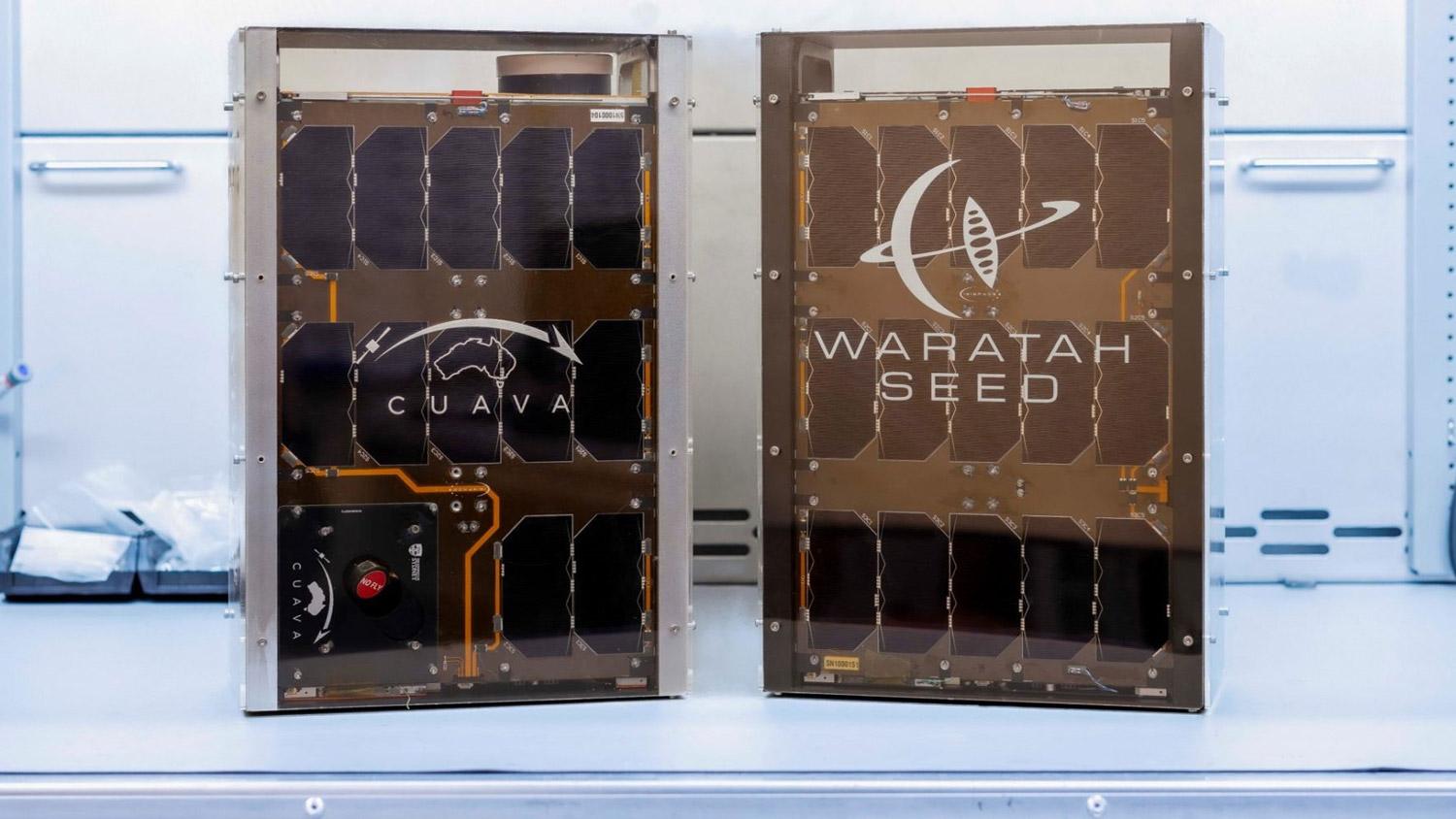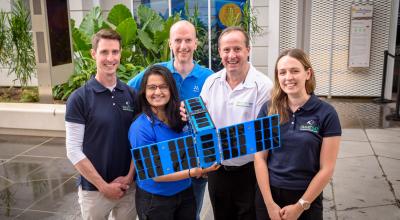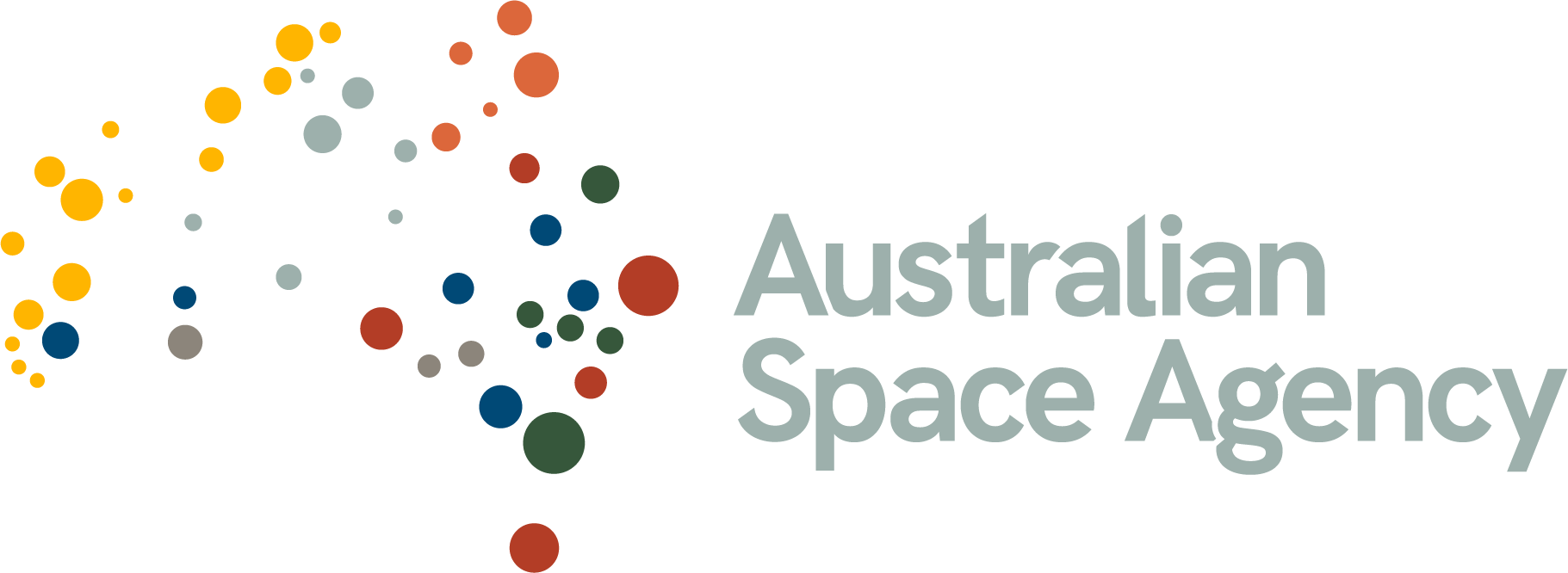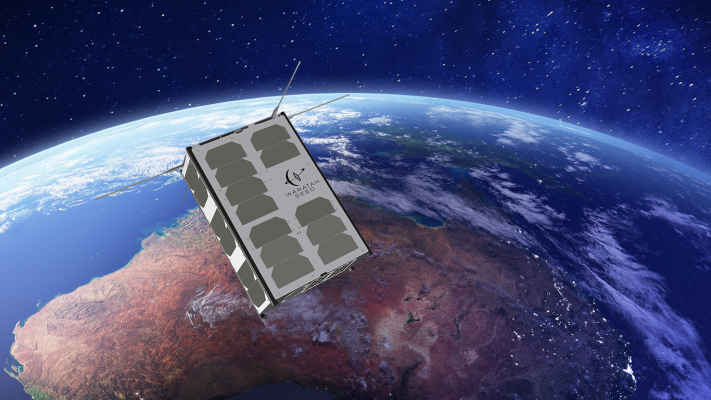The groundbreaking Australian satellite ride-share mission, Waratah Seed-1 (WS-1), was awarded a ‘Space Oscar.'
The Australian built and operated CubeSat won the SmallSat Mission of the Year award as part of the Small Satellite Conference in Salt Lake City, Utah. The event was hosted by the American Institute of Aeronautics and Astronautics in the United States.
Backed through a public vote, and supported by the judges for the Awards, WS-1 was the only Australian nomination and it triumphed over 10 other missions from across the world, including the United States and Europe.
The Aussie spacecraft is a six-unit CubeSat with a diverse scientific and commercial payload backed by the New South Wales Government, SmartSat CRC, and a consortium of universities led by the University of Sydney. It launched into orbit last year from California’s Vandenberg Space Force Base as part of Space X’s Transporter-11 mission.
Advancing Aussie space heritage
“We are all thrilled to have won this award. It is testament to the engineering and scientific ingenuity of our team at the University of Sydney, UTS, Macquarie University and our industry partners at Saber Astronautics, Delta-V and the Australian Centre for Space Engineering Research at UNSW.
"We thought our little Aussie satellite, packed with an unlikely nine scientific and commercial payloads, would last in space for six months. But now, just three days shy of a year in space, it is still orbiting Earth nearly 500 kilometres above ground and sending back data at the cool speed of 27,000 kilometres an hour.
“It shows Australia has a great future in the space industry. Thank you to the NSW Government for backing the mission.”
~ WS-1's mission leader Professor Iver Cairns, who is based out of the University of Sydney.
On Sunday 17 August, the Aussie CubeSat will mark another significant milestone, completing one year of successful operations in orbit — double its projected lifespan.

What’s onboard?
The WS-1 mission is carrying nine space technologies:
PORT-2 — a Perovskites in Orbit Readiness Test designed by EurokaPower and, led by academic Anita Ho-Baillie. These solar cells are self-healing, and designed to improve the cost, performance and durability of spacecraft solar cells and could be manufactured in Australia.
Space Edge-2 — an innovative space edge computing system designed by Spiral Blue, designed to deliver in-orbit image processing and delivery of near real-time observation data onboard Earth observation satellites.
An experimental meta-material developed by Dandelions using natural fibres such as flax and hemp, designed to provide a cost-effective, heat-resistant alternative to carbon fibre for use in spacecraft insulation.
Innovative solar cells based on terrestrial silicon technologies designed by ExtraTerrestrial Power, which aims to make the cells more resistant to radiation and significantly increase their operating life in space.
Subsystems and sensors for a robot arm by SperoSpace using unique tactile grips developed by partners Contactile, designed to enable in-orbit satellite maintenance, assembly, manufacturing and debris removal.
Matilda — a new spacecraft thermal management system developed by Mawson Rovers and UTS, using a 3D printed heat sync payload with an integrated phase-change material which releases thermal energy over a period of time.
Harry3 — a GPS reflectometry payload developed by the Australian Centre for Space Engineering Research at UNSW, designed to monitor ocean conditions remotely by measuring signals scattered off the waves.
SPaDeS — a submillimetre particle detection system designed at the School of Physics at the University of Sydney, to detect space debris particle impacts on satellites, and measure the Earth’s ionospheric plasma.
E-Mag — an ElectroPermanent Magnetorquer designed and built by University of Sydney university start-up, Deneb Space, to measure and change the positioning of satellites using far less power than conventional control systems.
Discussions are currently underway to assess industry and funding interest in a series of new Waratah Seed missions, with Waratah Seed-2 nominally planned to launch in 2027.

State of the art: local satellites are taking off
WS-1 was part of six Australian satellites funded by state and territory governments that were launched into orbit last year.

